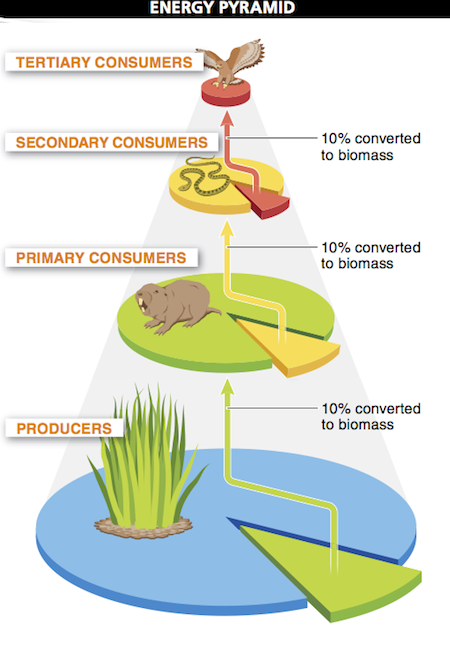
Chapter 15. Chapter 15 Graphic Content
Introduction

Instructions
Review the information provided in the graph to answer each question below.
After submitting your answer, you will be provided feedback to check if your response is correct.
(This activity contains 6 questions.)
1.

1. Why is the drawing of the hawk so much smaller than those of the other organisms?
2.

2. What does the size of each “pie” represent? Why aren’t they all the same size?
3.

3. What does the slice of the pie represent in each drawing?
4.

4. Why isn’t there a slice taken from the top pie?
5.

5. Would this figure be different if it included data from consumers that ate plants and other animals? How?
6.

6. What can you conclude from this figure about the relative numbers of predators versus herbivores in any environment?
Activity results are being submitted...